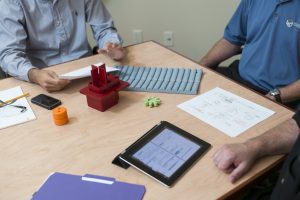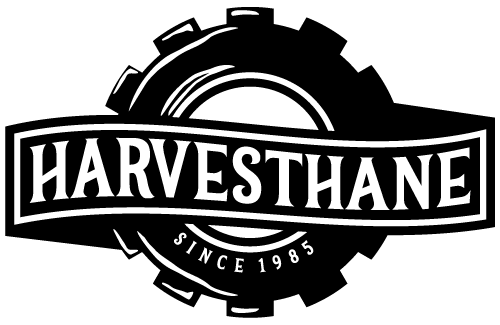There are many factors involved in the manufacturing of molded rubber products which affect tolerances. In general, the degree of reproducibility of dimensions depends upon the type of tooling and rubber used, and the state of the art. The purpose of this blog post is to list a few major factors affecting tolerances.
Shrinkage
All rubber materials exhibit some amount of shrinkage after molding when the part cools. However, shrinkage of the compound is also a variable in itself and is affected by such things as material specification, cure time, temperature, pressure, inserts, and post cure. The mold designer and the compounded must determine the amount of shrinkage for the selected compound and incorporate this allowance into the mold cavity size. Even though the mold is built to anticipate shrinkage, there remains an inherent variability that must be covered by adequate dimensional tolerance. Shrinkage of rubber is a volume effect. Complex shapes in the molded product or the presence of inserts may restrict the lineal shrinkage in one direction and increase it in another.
Mold Design
With any type of mold, the mold builder must have some tolerance, and therefore, each cavity will have some variance from the others. Dimensional tolerances on the product must include allowances for this fact. The accuracy of the mold register must also be considered. This is the matching of the various plates of the mold that form the mold cavity. Register is usually controlled by dowel pins and bushings or by self-registering cavities. For molds requiring high precision in dimensions and register, the design work and machining must be more precise and the cost of the molds will be greater than one with commercial requirements.
Inserts
Most insert materials (metal, plastic, fabric, etc) have their own standard tolerances. When designing inserts for molding to rubber, other factors must be considered, such as fit in the mold cavities, location of the inserts with respect to other dimensions, proper hole spacing to match with mold pins, and the fact that inserts at room temperature must fit into a heated mold. In these matters, the rubber manufacturer can be of service in advising on design features.
Distortion
Because rubber is flexible material, its shape can be affected by temperature. Distortion can occur when the part is removed from the mold or when it is packed for shipment. This distortion makes it difficult to measure the parts properly. Some of the distortion can be minimized by storing the part as unstressed ad possible for 24 hours at room temperature. Some rubber will crystallize (stiffen) when stored at low temperature and must be heated to above room temperature to overcome this condition.




